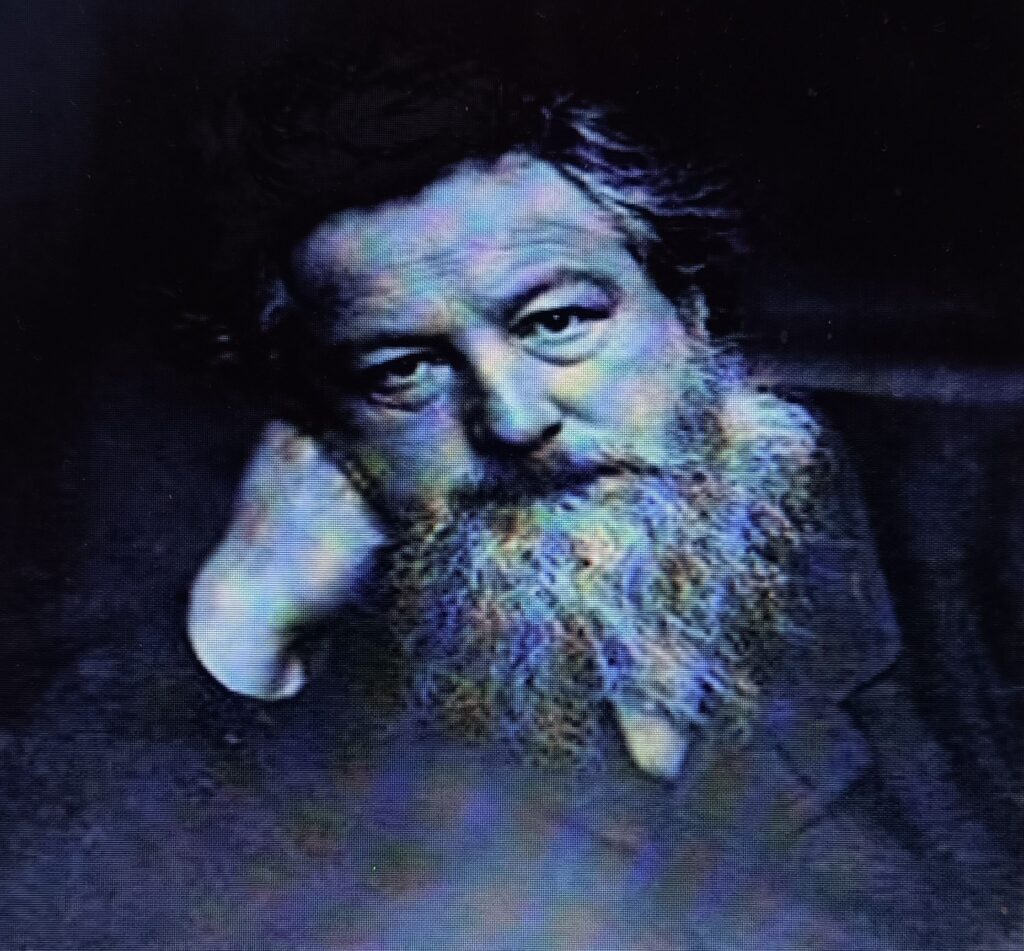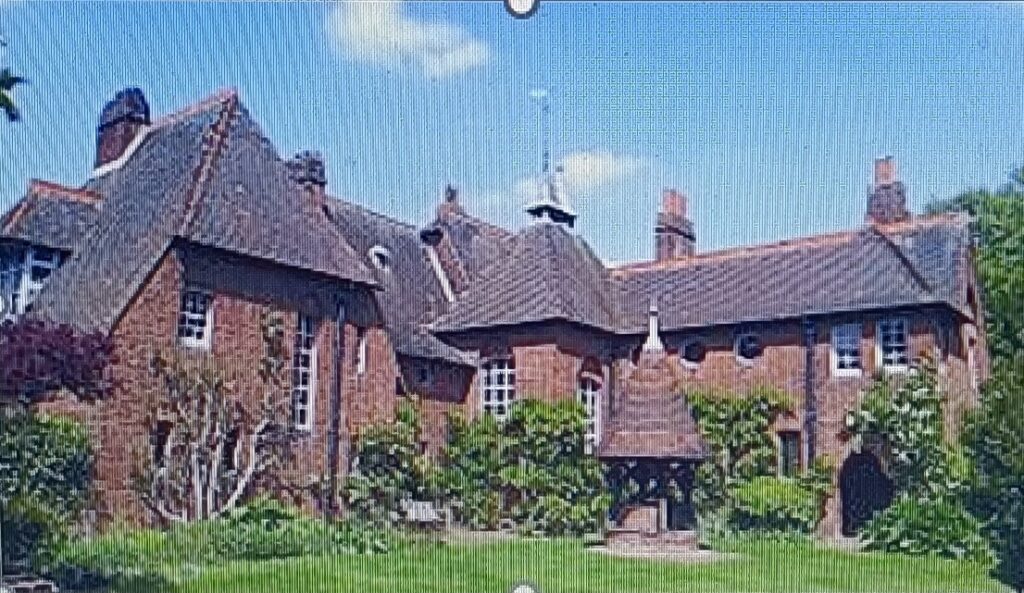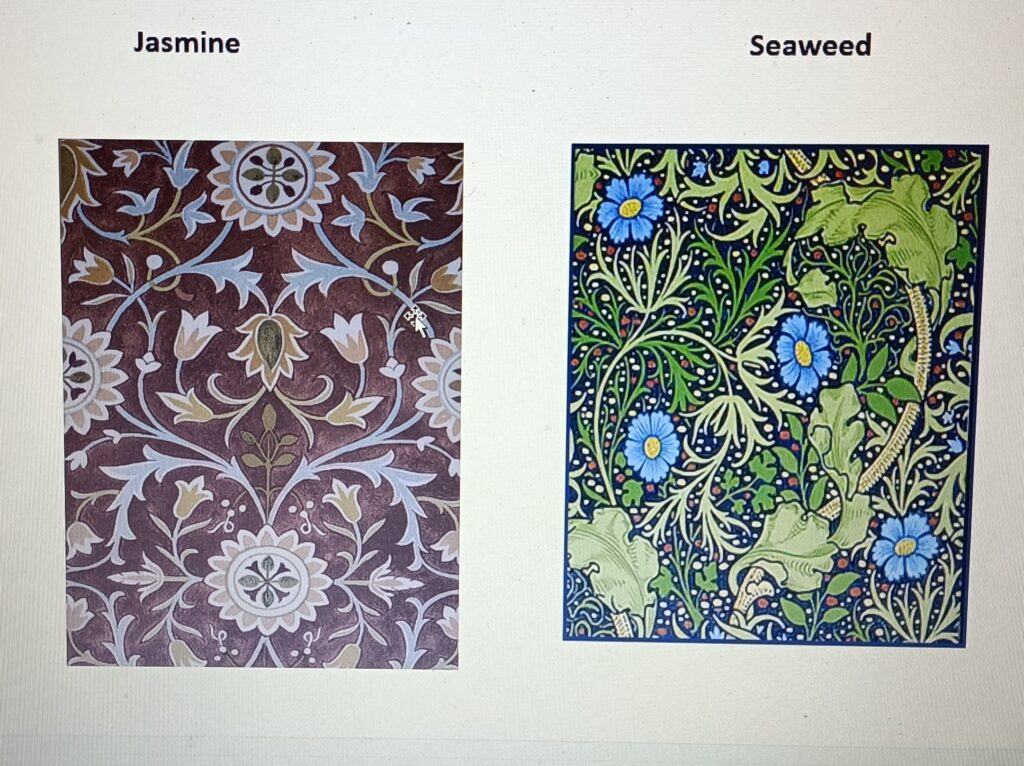Our 2024 year started with the welcome return of John Hull for a third appearance following his previous talks on The Siege of Leningrad and The Peterloo Massacre, and we had a delve into the life of William Morris, well known for his wallpaper and textile designs but less well known as a writer, poet, translator, socialist and founder of the Arts and Crafts Movement.
“Have nothing in your houses that you do not know to be useful or believe to be beautiful.”
“I do not want art for a few any more than education for a few, or freedom for a few.”
William was born into great wealth at Water House in Essex and was initially home-schooled, enjoying the benefits of the large estate in which the house sat. Unfortunately, his father died when William was only 13, and was sent thereafter to Marlborough College where he was homesick, bullied and bored. In 1851, he returned home to complete his schooling before going up to Oxford in 1852 where he studied Classics.
However, though he was not inspired he did develop an interest in architecture. He made friends with Edward Burne-Jones and was influenced by John Ruskin and his philosophy that the decorative arts should be affordable and craftsmen valued, principles that guided him throughout his life. William was also at this time further influenced by the poets John Keats and Tennyson amongst others.
He graduated in 1855 following which he was apprenticed to a London architect. He lived with Burne-Jones who joined the Pre-Raphaelites and William bought many of their paintings having considerable funds at his disposal.
During this time he made friends with many of the painters of the day including Rossetti who would it is believed go on to have an affair with Morris’s wife, Jane Burden. William and Jane moved in 1859 to Red House in Kent, a new property built to Morris’s design in the medieval spirit.
During this time he set up (with Rossetti, Burne-Jones and F.M.Brown) The Firm, in Red Lion Square London, a decorative arts and design company. Tiring of the long commute in 1865 he sold Red House, moving into accommodation over The Firm’s studio in Bloomsbury.
Morris was by now becoming well known. However, although The Firm’s products and services sold well the business was not very profitable. Perhaps because of his wife’s relationship with close friend Rossetti, he turned to poetry and was recognised as a major artist in this field. Worried about London’s pollution and the possible effect on his children’s health the family moved to Kelmscott Manor in Oxfordshire, in a joint tenancy with Rossetti.
Morris developed an interest in Icelandic sagas and visited the country on more than one occasion, translating many of the traditional Icelandic tales.
In 1874 Morris fell out with Rossetti who left Kelmscott Manor, and Morris bought out his business partners, winding up The Firm and re-opening as Morris & Co. The company continued to trade until 1927 when it entered liquidation the designs and name being purchased by Sandersons, the wallpaper company who continue to sell and develop Morris’s design today.
In addition to his business and artistic interests Morris was a committed socialist heavily influenced by John Ruskin and was an avid reader of Karl Marx’s works. With a strong social conscience, he espoused the cause of the working classes having no regard for the middle and upper classes despite his own personal wealth.
Morris was a prominent public speaker attending many marches and demonstrations and was arrested, though never charged with any offence, on several occasions. A prolific writer of political journals, the editor of the Socialist’s League’s paper and the writer of political novels.
In summary, he was a man of many talents whose work still impacts on society today with a significant legacy in the Arts and Crafts Movement which to a degree flourishes in different guises.




